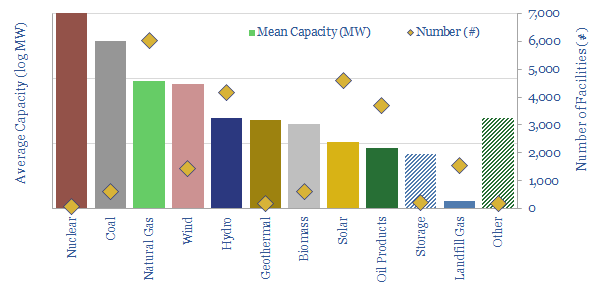This data-file aggregates granular data into the average size of different types of power plants: wind, solar, nuclear, gas, hydro, coal, biomass, landfill gas and geothermal, by looking across 23,000 facilities in the US (chart above).
The US power grid has 1.3TW of capacity, spread across 25,000 facilities with an average size of 50MW, which have been installed over the past century. This data-file aggregates data into the average capacity of different types of power plants, looking facility by facility. Underlying data are sourced from the US EIA.
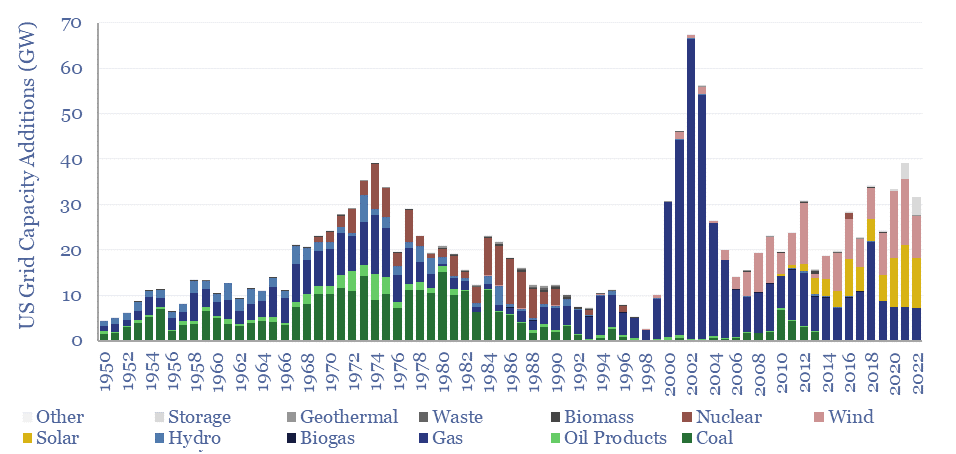
Enormous skew in the title chart above is somewhat masked by its logarithmic axis. For perspective, the mean average power plant is 10x larger than the median, and 50% of all the capacity comes from a core of 1,100 facilities (5% by number) with 500MW average capacity.
We have also run statistical analysis on these plants’ capacities and output voltages, to show their distribution, ranges and the largest 100 facilities in each category (below).
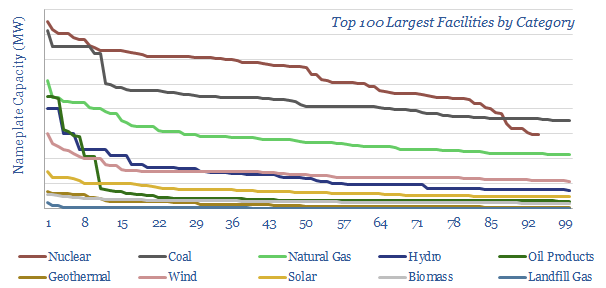
Switching coal to solar is a clear priority in the energy transition. But the average coal plant is 380MW with 50% utilization, while the average solar plant is 11MW with 20% load factor. So “replacing” 1 typical coal plant with 1 grid connection requires c100 solar plants with c100 grid connections. This may impact the demand for power grids and transformers.
Gas and wind capacity metrics actually look remarkably similar, with mean sizes of 92MW and 84MW respectively, and interquartile ranges of 8-160MW and 5-144MW. However, a c100MW gas turbine lives in a warehouse near its customers, while a 100MW wind farm covers 10,000 acres, situated a few hundred km away. Again, this looks bullish for cables.
Nuclear absolutely dominates the rankings of power plant sizes. 72 of the 100 largest generators in the country are nuclear reactors. And indeed, the smallest nuclear plant in America is actually bigger than the largest wind farm, as of 2022. Nuclear plants also interconnect to the grid at the highest voltage, for ultra-long distance transmission.
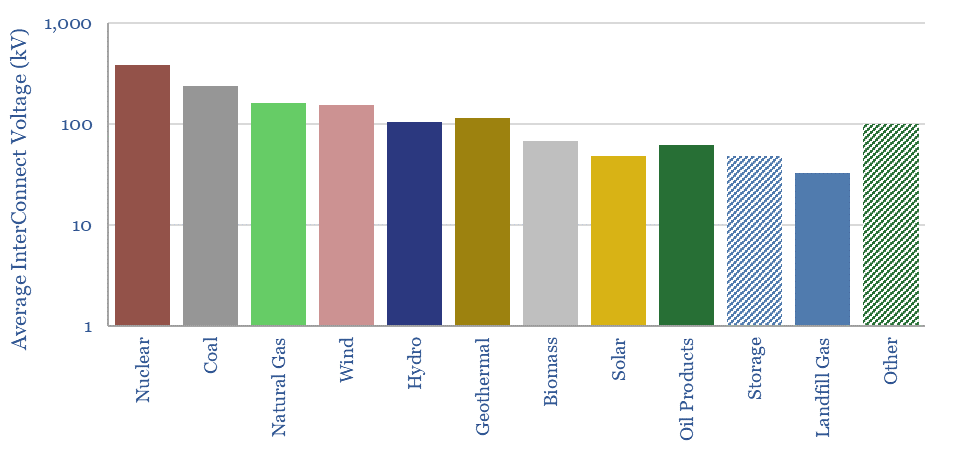
Smaller generation sources. We have recently written about opportunities in landfill gas, fuel cells, geothermal, and biomass power. But per the charts above, these facilities still tend to be small, at 1MW, 2MW, 23MW and 20MW. Indeed, the combined capacity of 2,000 landfill gas power plants in the US today is about the same as the country’s largest coal plant. So again, growth in these categories would lead grids to become more fragmented.
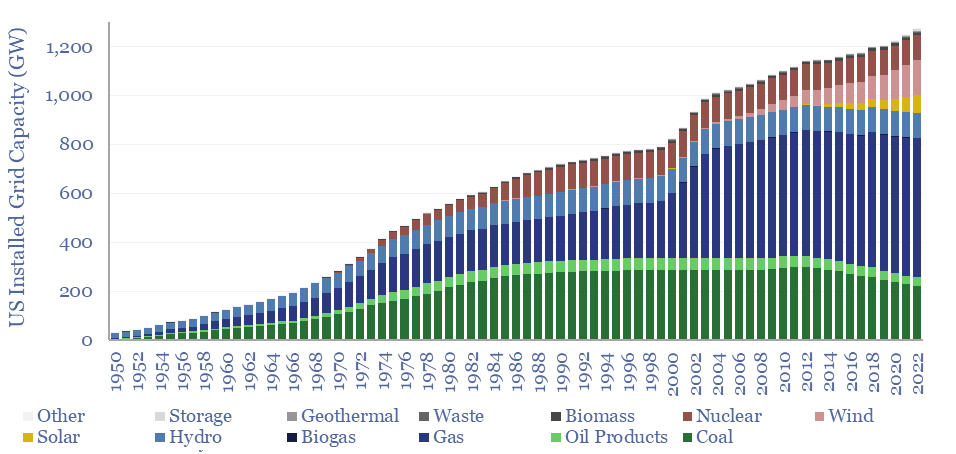
Our main conclusion is that the energy transition is going to increase the number of interconnections to the grid by 10-100x. The size and scale of nuclear facilities also stands out. The full data-file contains the locations, nameplate capacities, technologies and fuel types of 25,000 active power generation facilities and 4,000 retired facilities.
